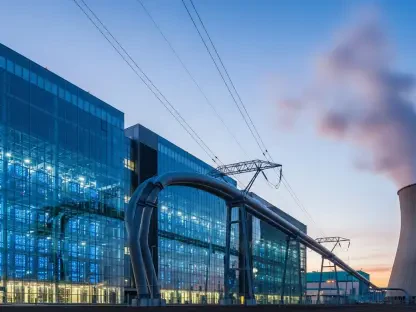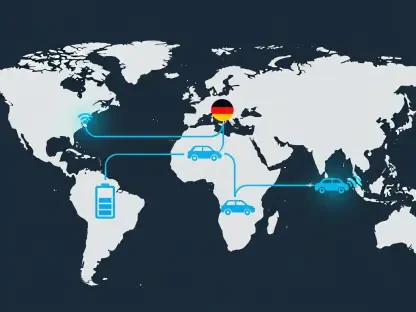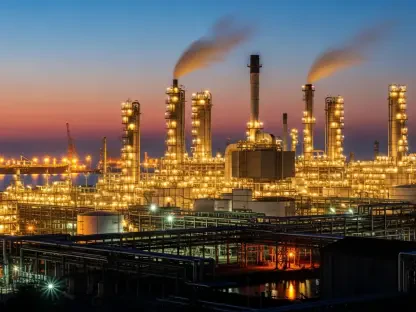What drives a small island nation to amass a towering reserve of fuel, reaching levels unseen in months, and how does this reflect broader trends in the global energy market? Singapore, a global oil trading powerhouse, currently holds a staggering 10.1 million barrels of middle distillates like diesel and jet fuel, marking a three-month peak. This unexpected surge raises questions about the intricate dance of supply and demand in one of the world’s most critical energy hubs. As regional dynamics shift and trade flows fluctuate, the implications of this stockpile could reverberate across Asia and beyond, affecting everything from fuel prices to market stability.
The significance of this buildup cannot be overstated. Singapore serves as a vital barometer for the global oil market, where even slight changes in inventory levels can signal broader trends in energy trade. With imports soaring and exports lagging, the current stockpile reflects a delicate imbalance that stakeholders—ranging from policymakers to energy analysts—must closely monitor. This situation offers a unique lens into the volatility of the industry and the strategic role of a tiny nation in shaping fuel availability for millions.
Unraveling the Surge in Singapore’s Fuel Reserves
Behind the headline-grabbing figure of 10.1 million barrels lies a complex web of factors fueling this unprecedented accumulation. Data indicates a sharp rise from the previous week’s 9.8 million barrels, driven primarily by a glut of diesel and jet fuel. This spike prompts a deeper look into why such vast quantities are piling up in storage tanks across the city-state, especially at a time when global energy demands are under constant scrutiny.
The numbers paint a picture of imbalance that goes beyond mere statistics. Industry watchers point to a confluence of regional supply surges and unexpected export slowdowns as key contributors. For a nation that thrives on the constant movement of fuel, this buildup suggests underlying shifts in trade patterns that could have far-reaching consequences for market players across the globe.
Singapore’s Pivotal Position in Global Oil Trade
Singapore’s role as a linchpin in the international oil market cannot be ignored when analyzing these stockpile levels. Often dubbed the “oil hub of Asia,” the city-state acts as a critical storage and trading center, connecting suppliers and consumers from Northeast Asia to Australia. Its strategic location and world-class infrastructure make it a focal point for middle distillates, influencing price trends and supply chains across multiple continents.
This unique position means that any fluctuation in Singapore’s reserves sends ripples through the energy sector. When stockpiles swell, it often signals oversupply or weakening demand in key markets, prompting traders to reassess their strategies. Conversely, a drop in reserves can indicate tightening supplies, pushing prices upward for businesses and end-users alike in regions far removed from Singapore’s shores.
The impact of these dynamics extends beyond mere economics. Governments and corporations rely on the stability of this hub to ensure fuel availability for aviation, shipping, and industrial needs. As such, understanding the forces at play in Singapore provides essential insights into the health of the broader energy ecosystem.
Dissecting the Stockpile Increase: Imports vs. Exports
A closer examination of trade data reveals the mechanics behind the current stockpile surge. Diesel and gasoil imports have skyrocketed, increasing nearly fivefold compared to prior weeks, with major inflows from South Korea, Malaysia, and Japan. Meanwhile, net exports of these fuels have plummeted by 40%, creating a significant overhang in storage facilities across the island.
Jet fuel tells a similar story, albeit with distinct nuances. Net exports have dropped by 41%, largely due to a wave of arrivals from China flooding the market. However, total exports have risen by 51%, buoyed by robust demand from destinations like Australia and Vietnam, illustrating a mixed picture of growth and constraint that contributes to inventory buildup.
Ship-tracking data from industry sources further underscores this disparity. While October imports are expected to remain dominated by Northeast Asian cargoes, with additional shipments from India arriving later in the month, the slower pace of export growth compared to imports has tipped the scales. This imbalance highlights how quickly trade flows can shift, leaving Singapore with more fuel than it can offload in the short term.
Market Perspectives: Data and Voices on Trade Patterns
Hard numbers and expert analysis shed light on the intricacies of Singapore’s fuel trade landscape. According to ship-tracking insights, the influx of imports from Northeast Asia remains a dominant force, with China emerging as a significant supplier of jet fuel. This trend aligns with market observations that regional production surpluses are being redirected to Singapore’s storage hubs, often outpacing local and export demand.
Emerging patterns also point to niche developments, such as the export of sustainable aviation fuel to the U.S. and Europe. Though a small fraction of total volumes, this shift reflects a growing interest in greener alternatives within the industry. Analysts note that such exports could signal a long-term pivot toward sustainability, even as traditional fuels dominate current stockpiles.
Market participants emphasize the role of regional demand in shaping export trajectories. Strong appetite from Australia and Vietnam has bolstered jet fuel outflows, while diesel shipments to Malaysia and Sri Lanka show steady growth. These insights, paired with data projecting continued import pressure through October, paint a vivid picture of a market caught between abundant supply and uneven demand, with Singapore at the center of this tug-of-war.
Implications and Strategies for Stakeholders
For businesses, policymakers, and analysts tracking Singapore’s fuel market, the current stockpile surge offers critical lessons. Monitoring import trends from key regions like Northeast Asia provides early warnings of potential oversupply, while tracking export shifts to growing markets such as Vietnam can reveal emerging opportunities. These indicators serve as valuable tools for anticipating price movements and supply disruptions in a volatile sector.
Beyond immediate market signals, the buildup raises questions about long-term balance in global oil trade. Stakeholders are encouraged to assess how sustained imbalances might affect fuel availability and costs, particularly for industries reliant on diesel and jet fuel. Developing contingency plans for sudden shifts in trade flows could prove essential in maintaining operational stability amid uncertainty.
Finally, the rise of sustainable aviation fuel exports hints at broader industry transformations. Energy players are advised to explore investments in green technologies and partnerships that align with global environmental goals. Staying ahead of these trends, while navigating short-term stockpile challenges, will be crucial for maintaining a competitive edge in an ever-evolving energy landscape.
Reflecting on the Fuel Surge Saga
Looking back, the dramatic rise in Singapore’s fuel stockpiles to a three-month high of 10.1 million barrels stood as a stark reminder of the fragility of global trade flows. The interplay of soaring imports from Northeast Asia and China, coupled with a relative lag in net exports, had created a temporary glut that captured the attention of markets worldwide. This episode underscored how even a small nation could reflect the pulse of an entire industry through its storage tanks.
The response from stakeholders had been one of cautious analysis, with many recalibrating strategies to account for potential oversupply risks. For those in the energy sector, the next steps involved closer collaboration on data sharing to predict import surges and export bottlenecks more accurately. Building stronger ties with regional partners also emerged as a priority to balance supply and demand more effectively.
Ultimately, the focus shifted toward innovation as a path forward. Industry leaders began exploring how sustainable fuel options could reshape trade patterns in the long run, reducing reliance on traditional stockpiles. This period of reflection highlighted the need for adaptive policies and forward-thinking investments to ensure resilience against future imbalances in the global oil market.









